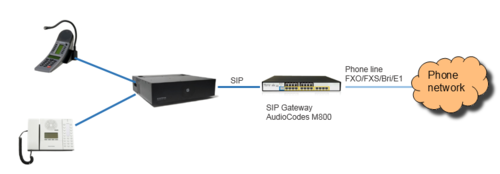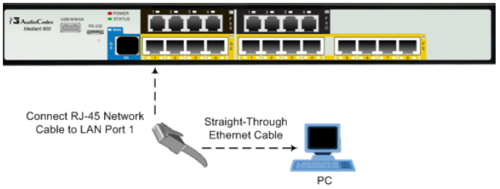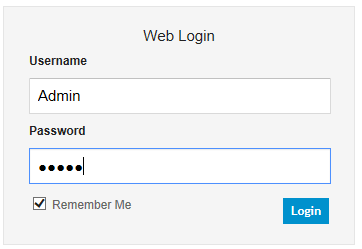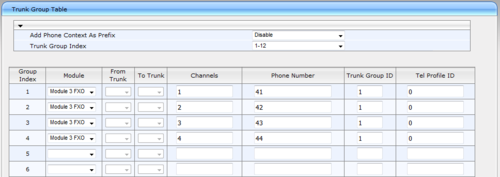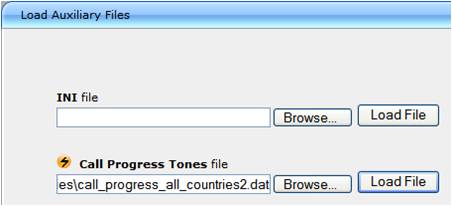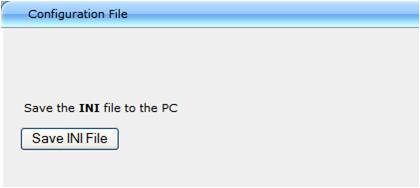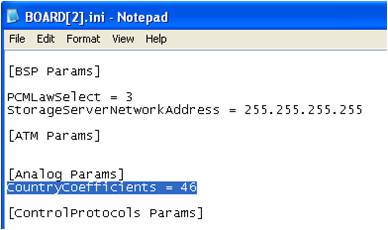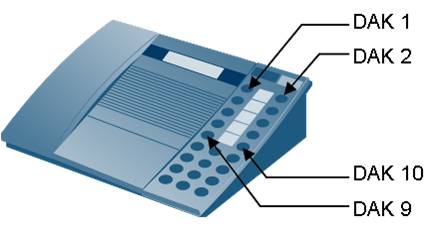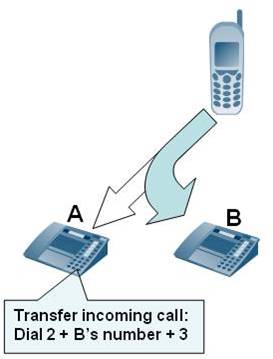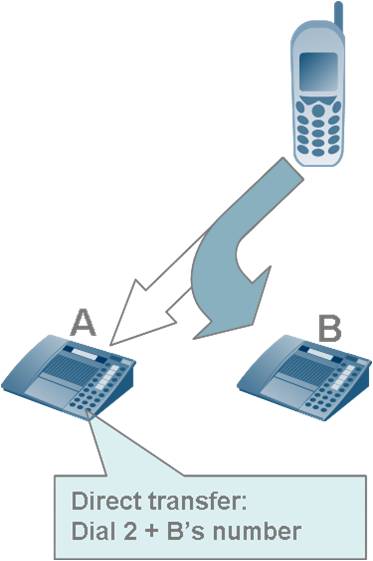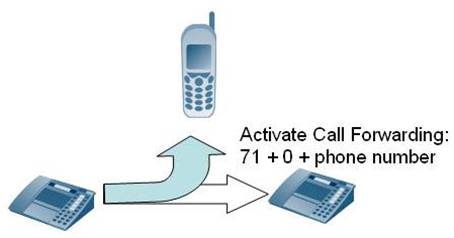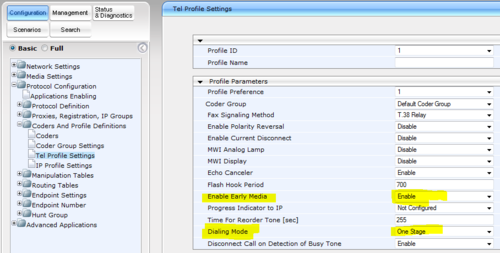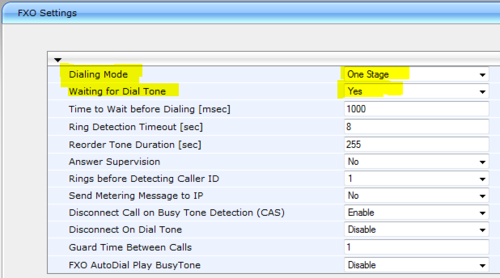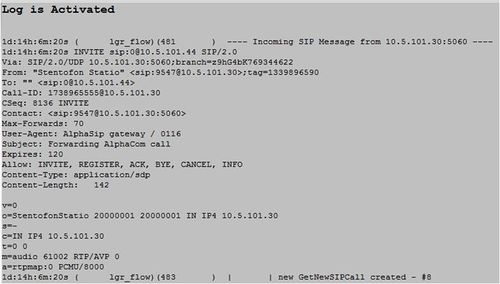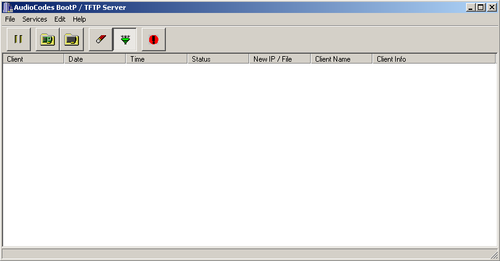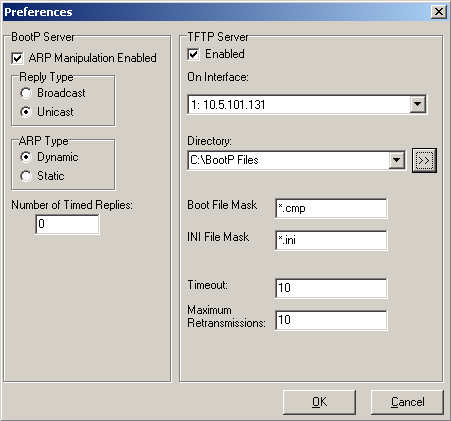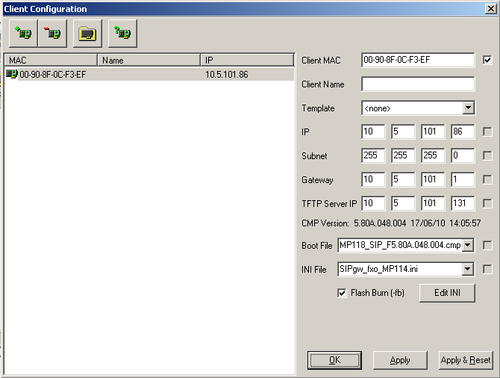AudioCodes Mediant 800, v6.6 and higher
From Zenitel Wiki
(Redirected from Configuration guide for AudioCodes Mediant 800, v6.6 and higher)THIS ARTICLE IS UNDER CONSTRUCTION!!
This article describes the setup of the AlphaCom XE system and the AudioCodes Mediant 800, firmware version 6.6. The article covers the most common features used in an AlphaCom ↔ AudioCodes interconnection.
AlphaCom Configuration
How to set up a SIP Trunk in the AlphaCom is described here: SIP trunk node - configuration
Audiocodes Mediant 800 Configuration
Configure Network Parameters
The AudioCodes Mediant 800 Gateway comes with default network parameters (factory default parameters):
- IP address = 192.168.0.2
- Network mask = 255.255.255.0
- Gateway = 192.168.0.1
The default IP address can be used for initially accessing the device. Once accessed, you can change this default IP address to correspond with your networking scheme in which the device is deployed. After changing the IP address, you can re-access the device with this new IP address and start configuring and managing the device as desired.
The procedure below describes how to assign a new OAMP (Operations, Administration, Maintenance, and Provisioning) IP address using the Web interface.
To assign an OAMP IP address using the Web interface:
1. Disconnect the network cables (if connected) from the device.
2. Connect Port 1 (left-most Ethernet port) located on the front panel directly to the network interface of your computer, using a straight-through Ethernet cable.
3. Change the IP address and subnet mask of your computer to correspond with the default IP address and subnet mask of the device.
4. Access the Web interface:
- a. On your computer, start a Web browser and in the URL address field, enter the default IP address of the device; the Web interface's Login screen appears:
- b. In the 'Username' and 'Password' fields, enter the default login user name ("Admin" - case-sensitive) and password ("Admin" - case-sensitive), and then click Login; the device's Web interface is accessed.
5. Open the Physical Ports Table page (Configuration tab > VoIP menu > Network submenu) and then modify the device's physical Ethernet port-pair (group) that you want to later assign to the OAMP interface.
6. Change the default IP address to one that corresponds with your network:
- a. Open the IP Interfaces Table page (Configuration tab > VoIP menu > Network submenu).
- b. Select the 'Index' radio button corresponding to the "OAMP + Media + Control" application type, and then click Edit.
- c. Change the IP address, subnet mask, and Default Gateway IP address to correspond with your network IP addressing scheme.
- d. From the 'Underlying Interface' drop-down list, select the physical Ethernet port-pair group that you want to assign to the interface.
- e. Click Apply, and then click Done to validate your settings.
7. Save your settings to the flash memory with a device reset.
8. Disconnect the computer from the device and then reconnect the device to your network.
SIP Parameters
- In the 'Proxy & Registration' page (Configuration tab > VoIP menu > SIP Definitions submenu > Proxy & Registration page item) set the ‘Use Default Proxy’ field to ‘Yes’.
- 'Proxy Name' must be blank
- 'Gateway Name' must be blank
- Click the Proxy Set Table button. In the ‘Proxy Address’ field enter the IP address of the AlphaCom.
- Set 'Transport Type' to 'UDP'.
- Press Submit to save changes
Audio Codec
- Select the voice coder in 'Coders Table' page (Configuration tab > VoIP menu > Coders and Profiles submenu > Coders page item). Choose G.711U-law Coder Name, 20 ms Packetization Time and Silence Suppression Disabled.
- Press Submit to save changes
About Saving Changes
The Submit button will save the data to the running volatile memory. The changes take effect on-the-fly. The changes will not survive hardware reset or power off.
To permanently save the configuration data, store the data to flash memory by selecting Burn from the Tool Bar.
Note: Parameters proceeded by a yellow lightning symbol is not changeable on-the-fly and require that the device is reset.
Backup and Restore
The configuration of the AudioCodes Gateway can be stored to a file on your PC.
From the Tool Bar select Device Actions -> Save Configuration File. Select Save INI File to save the configuration to the PC, and select Load INI File to upload a configuration file to the SIP Gateway.
FXO lines
Configure calls to outside lines
There are two ways of selecting a FXO line from the AlphaCom.
- Group Hunt, where a prefix is dialed and you are connected to one out of several lines
- Direct FXO line selection, where there is one prefix assigned for each of the FXO lines.
The two methods can be combined.
Alternative 1: Group Hunt
Dial a prefix and get connected to a free FXO line.
Trunk Group Settings
- In the 'Trunk Group Settings' page (Configuration tab > VoIP menu > GW and IP to IP submenu > Trunk Group submenu > Trunk Group Settings page item) set the ‘Trunk Group ID’ field to ‘1’ and ‘Channel Select Mode’ to ‘Cyclic Ascending’.
IP to Hunt Group Routing
When dialing the prefix from AlphaCom, the call needs to be routed to the appropriate Trunk Group ID associated with the FXO ports. In the example below the call is routed to trunk group ID 1. (Configuration tab > VoIP menu > GW and IP to IP submenu > Routing submenu > IP to Trunk Group Routing page item)
Trunk Group Table
In the ‘Trunk Group Table’ page the FXO lines are linked to the prefix in AlphaCom and to the trunk group ID. (Configuration tab > VoIP menu > GW and IP to IP submenu > Trunk Group submenu > Trunk Group page item).
In the example below all four FXO lines 1-4 belong to Trunk Group ID 1. When dialing 0 on an intercom station the first available line will be granted. Directory number 0 must be programmed in the AlphaCom directory table with feature 83/<node>. See paragraph 2.2.3.
Alternative 2: FXO Line Select
In installations with different types of equipment connected to the various FXO lines the user must be able to select which FXO port to use. On a ship, for instance, there could be a mix of shore lines, GSM interface and Satelitte lines. Line selection is done by dialing a unique directory number for each FXO line. The directory numbers must be programmed in the AlphaCom directory table with feature 83/<node>. See paragraph 2.2.3.
Trunk Group Settings
- In the 'Trunk Group Settings' page (Configuration tab > VoIP menu > GW and IP to IP submenu > Trunk Group submenu > Trunk Group Settings page item) set the ‘Trunk Group ID’ field to ‘1’ and ‘Channel Select Mode’ to ‘By Dest Phone Number’.
IP to Hunt Group Routing
When dialing the prefix from AlphaCom, the call needs to be routed to the appropriate Trunk Group ID associated with the FXO ports. In the example below the call is routed to trunk group ID 1. (Configuration tab > VoIP menu > GW and IP to IP submenu > Routing submenu > IP to Trunk Group Routing page item)
Trunk Group Table
In the ‘Trunk Group Table’ page the FXO lines are linked to the prefix in AlphaCom and to the trunk group ID. (Configuration tab > VoIP menu > GW and IP to IP submenu > Trunk Group submenu > Trunk Group page item).
In the example below FXO line 1 is accessed by dialing 41, line 2 is accessed by dialing 42 etc. Directory number 41 - 44 must be programmed in the AlphaCom directory table with feature 83/<node>. See paragraph 2.2.3.
Incoming calls from outside lines
You can choose between three different ways of handling an incoming call from the telephone line:
- Selective Dialing
- Automatic Dialing
- Delayed Automatic Dialing
Selective Dialing
A second dial tone will be presented when calling in, and the user can dial the desired intercom number. The fields in the ‘Automatic Dialing’ page item must be left blank (Default setting). (Configuration tab > VoIP menu > GW and IP to IP > Analog Gateway submenu > Automatic Dialing page item).
In this mode the gateway collects digits from the line, and sets up the call towards the AlphaCom when a predefined number of digits are collected and no more digits are received within a preset time (default 4 seconds), or when the ‘#’ key is dialed.
In the 'DTMF & Dialing' page (Configuration tab > VoIP menu > GW and IP to IP > DTMF and Supplementary submenu > DTMF & Dialing page item) select ‘Advanced Parameter List’ in order to view all parameters, and set ‘Max Digits In Phone Num’ equal to the number of digits used on the AlphaCom stations, normally 3 or 4. The parameter ‘Inter Digit Timeout [sec]’ specifies the waiting time for more digits before setting up the call.
Automatic Dialing (Call to Switchboard)
When calling in, the call will automatically be connected to a predefined intercom number.
- Enter the intercom number in the ‘Destination Phone Number’ field in the ‘Automatic Dialing’ page item. Set ‘Auto Dial Status’ to ‘Enable’. (Configuration tab > VoIP menu > GW and IP to IP > Analog Gateway submenu > Automatic Dialing page item).
In the example above, incoming calls on line 1 are routed to station 103, calls on line 2 are routed to station 101, and calls on line 3 and 4 are routed to RingingGroup 6701.
Delayed Automatic Dialing
If ‘Auto Dial Status’ is set to ‘Hotline’, a second dial tone will be presented when calling in, allowing the user to dial a number. But if no digits are pressed within the ‘Hotline Dial Tone Duration’ time, the number in the Destination Phone Number is automatically dialed.
The ‘Hotline Dial Tone Duration’ can be changed from the 'DTMF & Dialing' page item (Configuration tab > VoIP menu > GW and IP to IP submenu > DTMF and Supplementary submenu > DTMF & Dialing page item). Select the ‘Advanced Parameter List’. The default value is 16 seconds.
Caller ID
Use the ‘Caller Display Information’ page to send display information to the intercom station that receives the call. (Configuration tab > VoIP menu > GW and IP to IP submenu > Analog Gateway submenu > Caller Display Information page item).
The prefix code entered in the End Point Phone Number Table will be shown together with the text in Caller ID/Name.
If Caller ID name is detected on the FXO line, this will be used instead of the Caller ID name in the table above. Display the Navigation Tree in Full View. Caller ID from FXO line must be enabled in Configuration tab > VoIP menu > GW and IP to IP submenu > DTMF and Supplementary submenu > Supplementary Services page item.
- Set ‘Enable Caller ID’ to ‘Enable’ and choose the ‘Caller ID Type’ as used by the PSTN supplier. Check with the local telephone company to find the ‘Caller ID Type’ used.
Far end disconnect (FED)
Far End Disconnect refers to methods for detecting that a remote party has hung up. The far end disconnect signal is not mandatory and this could create problems. If the Far End Disconnect signal is not sent to or properly detected by the SIP Gateway, the connection will not be released by the unit, thus freezing the FXO line in the off hook state.
Call Termination options in the SIP Gateway
The following methods for call termination are supported by the AudioCodes MP-114/118. Note that the used disconnection methods must be supported by the CO (Central Office) or to PBX (Private Branch Exchange).
- Detection of polarity reversal / current disconnect
- Detection of Busy / Dial tones
- Timeout of Conversation
- Detection of silence (NOT recommended, could lead to unwanted disconnection of calls)
Detection of polarity reversal / current disconnect
This is the recommended method. The call is immediately disconnected after polarity reversal or current disconnect is detected on the Tel side (assuming the PBX / CO produces this signal).
- Display the Navigation Tree in Full View. Enable the relevant detection method in Configuration tab > VoIP menu > SIP Definitions submenu > Advanced Parameters page item.
Detection of Busy / Dial tones
The call is immediately disconnected after Busy or Dial tone is detected on the Tel side (assuming the PBX / CO produces this tone). This method requires the correct tone frequencies and cadence to be defined in the Call Progress Tones (CPT) file of the SIP Gateway. If these frequencies are not known, define them in the CPT file (the tone produced by the PBX / CO must be recorded and its frequencies analyzed). This method is slightly less reliable than the previous one.
- Open the ‘FXO Settings’ page item in Configuration tab > VoIP menu > GW and IP to IP submenu > Analog Gateway menu > FXO Settings page item and enable the relevant detection method.
Call Progress Tones (CPT)
The Detection of Busy / Dial tones method requires the correct tone frequencies and cadence (on/off sequence) to be defined in the Call Progress Tones (CPT) file of the SIP gateway. These tones are region specific and telephone exchange dependent.
The Call Progress Tones (CPT) configuration file is a binary file (with the extension .dat).
You can either use:
- a CPT file with the most common tone patterns available from the download site
- one of the supplied CPT (dat) files found on the CD provided with the gateway
- construct your own file by adding new tones to the CPT file
Load a Call Progress Tones (dat) file to the SIP gateway:
- Select Management tab > Software Update menu > Load Auxiliary Files page item.
- Click the Browse button and navigate to the folder that contains the file you want to load
- Click the file and click the Open button; the name and path of the file appear in the field beside the Browse button
- Click the Load File button
- Burn the configuration so the file can be available after a power failure
- Reset the SIP Gateway for the changes to take effect
For more detailed information regarding Call Progress Tones please refer to the AudioCodes User's Manual found on the CD supplied with the unit.
Timeout of Conversation
As an additional safety to prevent lines from accidentally locking up, it is recommended to enable a timeout of conversation.
The ‘Max Call Duration’ defines the maximum call duration in minutes. If this time expires, both sides of the call are released (IP and Tel). The valid range is 0 to 120. The default is 0 (no limitation).
- Display the Navigation Tree in Full View. Enable the ‘Max Call Duration’ in Configuration tab > VoIP menu > SIP Definitions submenu > Advanced Parameters page item.
FXS lines
BRI lines
Miscellaneous features
Country Settings
The Line Characteristics (AC impedance matching, hybrid balance, Tx & Rx frequency response, Tx & Rx Gains, ring detection threshold, DC characteristics) should be set according to country of origin. Some of the SIP Gateway parameters are configurable through the ini configuration file only (and not via the Web). The CountryCoefficients parameter that determines the line characteristics must be configured via the ini configuration file.
- Procedure to modify the ini file:
- Get the ini file from the gateway using the Embedded Web Server. From the Tool Bar select Device Actions -> Save Configuration File. Select Save INI File to save the configuration to the PC:
- Open the file (e.g. in Notepad) and add anywhere in the file the line
CountryCoefficients = xx
- where xx is the country code found below; save and close the file. The example below shows the settings for Norway (46).
- Load the modified ini file back to the gateway (using the button Load INI File).
This method preserves the programming that already exists in the device, including special default values that were preconfigured when the unit was manufactured.
Country codes
The default value is 70 (United States).
| Argentina | = 0 |
| Australia | = 1 |
| Austria | = 2 |
| Bahrain | = 3 |
| Belgium | = 4 |
| Brazil | = 5 |
| Bulgaria | = 6 |
| Canada | = 7 |
| Chile | = 8 |
| China | = 9 |
| Colombia | = 10 |
| Croatia | = 11 |
| Cyprus | = 12 |
| Czech_Republic | = 13 |
| Denmark | = 14 |
| Ecuador | = 15 |
| Egypt | = 16 |
| El Salvador | = 17 |
| Finland | = 18 |
| France | = 19 |
| Germany | = 20 |
| Greece | = 21 |
| Guam | = 22 |
| Hong_Kong | = 23 |
| Hungary | = 24 |
| Iceland | = 25 |
| India | = 26 |
| Indonesia | = 27 |
| Ireland | = 28 |
| Israel | = 29 |
| Italy | = 30 |
| Japan | = 31 |
| Jordan | = 32 |
| Kazakhstan | = 33 |
| Kuwait | = 34 |
| Latvia | = 35 |
| Lebanon | = 36 |
| Luxembourg | = 37 |
| Macao | = 38 |
| Malaysia | = 39 |
| Malta | = 40 |
| Mexico | = 41 |
| Morocco | = 42 |
| Netherlands | = 43 |
| New_Zealand | = 44 |
| Nigeria | = 45 |
| Norway | = 46 |
| Oman | = 47 |
| Pakistan | = 48 |
| Peru | = 49 |
| Philippines | = 50 |
| Poland | = 51 |
| Portugal | = 52 |
| Romania | = 53 |
| Russia | = 54 |
| Saudi_Arabia | = 55 |
| Singapore | = 56 |
| Slovakia | = 57 |
| Slovenia | = 58 |
| South_Africa | = 59 |
| South_Korea | = 60 |
| Spain | = 61 |
| Sweden | = 62 |
| Switzerland | = 63 |
| Syria | = 64 |
| Taiwan | = 65 |
| TBR21 | = 66 |
| Thailand | = 67 |
| UAE | = 68 |
| United_Kingdom | = 69 |
| UnitedStates | = 70 |
| Yemen | = 71 |
Feature Guide
- Make a call from an intercom station: Dial prefix – wait for the dial tone – dial phone number
- When pressing digits during connection, DTMF digits are sent (Call center etc.)
- The DTMF signals ‘*’ and ‘#’ will be transmitted when pressing DAK 1 (*) and DAK 2 (#)
- A complete phone number can be stored under a DAK key or a substation call button.
Program DAK key from station:
- 784 + <prefix> + <phone number> + M + DAK key
Example:
784 + 0 + 40002500 + M + DAK key
Program from AlphaPro:
- I <prefix> P <phone number>
Example:
I 0 P 40002500
Call Transfer
- Incoming calls from the line can be transferred to another station
During conversation, dial on the keypad:
- 2 + <intercom station> + 3
From a preprogrammed DAK:
- D 2 I 104 M M D 3
Outgoing calls to the line can be transferred to another station
During conversation, dial on the keypad:
- DAK9 + 2 + <intercom station> + 3
Option: Blind Transfer
- In AlphaPro, Directory & Features menu, modify the Inquiry feature 2 from default feature 55/0 to feature 55/1.
- During conversation, dial on the keypad:
- 2 + <intercom station>
Call Forwarding
An intercom call can be forwarded to a telephone
From keypad:
- 71 + 0 + <phone number> + M
From preprogrammed DAK:
- I 71 I 0 P 40002500
Search List
A telephone number can be included in the Search List of a station.
Format:
- I <prefix> P <phone number>
Example:
I 0 P 40002500
One Stage dialing
When interfacing to e.g. PABX's using the AudioCodes MP11x, there is often a requirement to have an integrated number plan. E.g. in order to call PABX extension 4529 from an intercom station one should dial the number 4529, and not use prefix (say 0 + 4529). To achive this one can use one-stage dialing (also called "enbloc dialing") instead of the default two-stage dialing (also called "overlap dialing").
The default dialing mode is two-stage dialing, and that is what is described earlier in this article. When two-stage dialing is enabled, the gateway seizes one of the PSTN/PBX lines without performing any dialing, connects the AlphaCom station to the PSTN/PBX, and all further signaling (dialing and Call Progress Tones) is performed directly with the PBX without the gateway's intervention.
When one-stage dialing is enabled, the gateway seizes one of the available lines, and dials the destination phone number received in the INVITE message from the AlphaCom. The digit collection is done in the AlphaCom.
AudioCodes Configuration
The AudioCodes gateway should be configured as described earlier in this article, but with the following modifications and additions:
- In the ‘Endpoint Phone Number Table’ page the FXO lines are linked to the hunt group ID and a Telephone Profile ID.
(Configuration tab > VoIP menu > GW and IP to IP submenu > Hunt Group submenu > EndPoint Phone Number page item).
- If there are unused lines, leave the fields for that line blank.
- In the ‘Tel Profile Settings' page, select Profile ID 1, and enable Early Media and set Dialing Mode to One-Stage.
(Configuration tab > VoIP menu > Coders and Profiles submenu > Tel Profile Settings page item).
- In the 'FXO Settings' page, enable One-Stage dialing and 'Wait for dialtone'.
(Configuration tab > VoIP menu > GW and IP to IP submenu > Analog Gateway submenu > FXO Settings page item).
Troubleshooting
Message log
The 'Message Log' page displays Syslog debug messages sent by the device. You can select the Syslog messages in this page, and then copy and paste them into a text editor such as Notepad. This text file (txt) can then be sent to Technical Support for diagnosis and troubleshooting.
Note:
It's not recommended to keep a Message Log session open for a prolonged period. This may cause the device to overload. For prolonged (and detailed) debugging, use an external Syslog server.
To activate the Message Log, take these 3 steps:
- In the 'Advanced Parameters' (Configuration tab > VoIP menu > SIP Definitions submenu > Advanced Parameters page item), set the parameter 'Debug Level' to 6. This parameter determines the Syslog logging level in the range 0 to 6, where 6 is the highest level.
- Open the 'Message Log' page (Status & Diagnostics tab > System Status menu > Message Log page item). Now the 'Message Log' page is displayed and the log is activated.
The displayed logged messages are color coded as follows:
- Yellow - fatal error message
- Blue - recoverable error message (i.e., non-fatal error)
- Black - notice message
- To clear the page of Syslog messages, in the Navigation tree, click the page item Message Log again; the page is cleared and new messages begin appearing.
To stop the Message Log, take this step:
- Close the page by accessing any another page in the Web interface.
Factory Reset by using BootP utility
If the factory reset for some reason seem to fail, and you end up with all LED's lit in the MP11x, then it is no longer possible to contact the MP11x using a known IP address. A possible rescue is to use the AudioCodes' BootP program. This program accesses the MP11x using its MAC address and uploads a selected firmware file (cmp) and configuration file (ini file).
The BootP program, the cmp-file and the ini-file can be downloaded from the download site.
- Install and run BootP
- Click Edit -> Preferences
- Set the TFTP server (your computer) and the directory where the firmware (.cmp) and .ini files are stored
- Click OK
- Click Service -> Clients
- Enter the MAC address and set the IP settings that you want the device to have. Also make sure that the boot file (firmware) and .ini file is selected
- Click Apply&Reset then OK
- Finally, reset the AudioCodes by pressing the reset button on the back.

